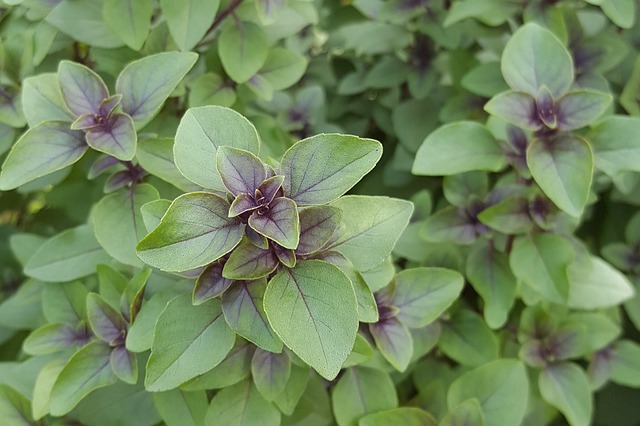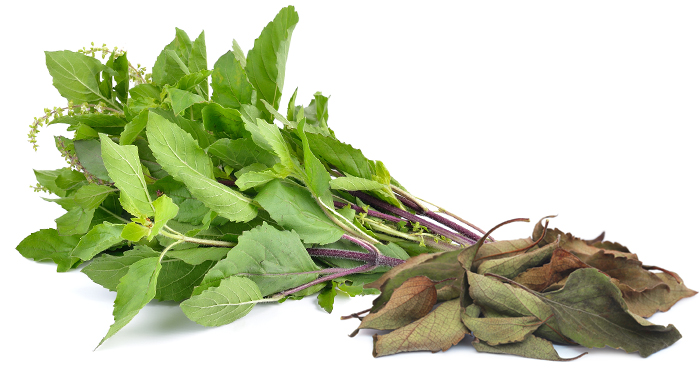
In India, people have been growing tulsi for its medicinal properties for more than 3,000 years.
Holy basil is considered a sacred plant in Hinduism.
In traditional medicine, tulsi is used for:
- Stress
- Digestive problems
- Treating colds and fevers
- Treating allergies and infections
- Strengthening the immune system
- Treating hair and skin disorders
- Dental health
- Repelling insects and treating insect bites
Tulsi is very important in Ayurveda and naturopathy, because the plant is loaded with antioxidants, phytonutrients, essential oils, and vitamins A and C, which have been known to help manage diabetes and high blood pressure. If you use a few tulsi leaves regularly, it will help the body function properly in general.
It is known to have antibacterial, antiviral, and antifungal properties. It is considered an adaptogen (a substance that helps the body adapt and function optimally).
Besides adding it to salads, the leaves are easy to make into a tea.

Add It to Your Garden
There are more than 100 varieties of tulsi. If you have a warm, sunny place in your garden or on your porch or windowsill, consider adding a tulsi plant. It is perfect in a container garden with other sun-loving herbs. It is easy to grow and requires very little care.
In the late spring or early summer, when the temperatures in your area are around 70°F, sow seeds outdoors. If you want an early start, sow the seeds indoors in a sunny window.
Put the tulsi seeds on top of the soil and lightly press down for soil contact. Spray the seeds with water or compost tea. Keep the soil moist until the seeds germinate in about 1 to 2 weeks.
For a bushier plant, pinch the top of the tulsi plant when there are 4 to 6 pairs of leaves.
Harvest Tulsi
Harvest the tulsi leaves throughout the growing season. As the plant gets bigger, use a pair of scissors to cut the larger leaves or to cut an entire branch.
Use the fresh leaves the same day or they will fade. Or, dry the leaves by collecting the branches and placing them in a dry place away from direct sunlight. Move the stems around about 3 times each day until the leaves are crisp and easily crushed.
https://thegrownetwork.com/grow-tulsi




Комментариев нет:
Отправить комментарий